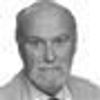
There is a growing amount known about the role of religion in the HIV/AIDS pandemic in Africa. Or, at least, this has been a privileged area in the thin research available on religion and health. But the framing, in the mass media and contemporary debates, of religious interventions in prevention and stigma has meant that very little of it has trickled out of specialist publications.
The frame has been set by a few horror stories of pastors burning condoms or promoting conspiracy theories that condoms are a western plot, by wrath of God beliefs, and faith-healing practices. They fit into comfortable stereotypes of progressive western development agencies battling African ignorance and superstition, a secular replay of enlightenment and civilisation being brought to the natives by nineteenth century missionaries. They justify the presentation of religion as part of the problem rather than an important part of the solution.
In some ways HIV/AIDS is not a "typical" disease. So general conclusions drawn from it about the role of religion in behaviour change should be treated with caution. For a start HIV positive people remain asymptomatic for up to ten years, making calculations of risk imponderable. Probability of transmission for any one sexual encounter is relatively low so infection can look random. Yet, the behaviour of a spouse can kill you. The question becomes not how but why this particular individual gets infected. Male labour migration is, of course, a major cause. Despite the prestige of western medicine there is still no cure.
The gravity of the HIV/AIDS pandemic, its capacity for global spread, meant that the normal secular barriers erected by health authorities to serious engagement with religious organisations broke down. For the last three decades, it has been all hands on deck of the three boats, the ABC of prevention: Abstinence, Being faithful and Condoms. Or, at least, the first two with the latter increasingly being presented as the rubber dinghy for those who do not manage to stay on board the first two. The boat image was the creation of a Catholic priest.
Jenny Trinitapoli and Alexander Weinreb in their Religion and Aids in Africa (OUP, 2012) bring a plethora of facts and research data into the debate and blow apart facile media preconceptions. Their conclusions are that local religious leaders began combating the disease long before the big agencies came over the hill. They were, and are innovative and effective. The vast majority people of faith in Africa live in an environment full of immediate risks, hunger, drought, violence, and do not rank AIDS as their primary concern. Africans in the main do not use condoms in marriage. Condom use amongst Catholics is higher than amongst Muslims despite many more Muslims saying that condom use is acceptable to their faith (53% to 39%). A surprising number of Christian leaders, including Catholics, accept condom use, often presented as the lesser of two evils. And, since fertility rates in Catholic Spain and Italy have fallen like a stone why, other than prejudice, is it imagined that African Catholics pay any more attention to their official teaching?
Due to calculations of risk, government health messaging can have less impact in behaviour change than might be expected. Effective religious leadership building up strong faith communities can have more impact. The key to improved prevention is high levels of "religiosity", participation in religious worship and life, more faith not less, the social monitoring of sexual conduct within small village religious communities. Differences between denominations prove minor for most measurements. It is intensity of belief that matters.
The real story is that the contemporary western account of religion and AIDS is a bi-product of a programmatic secularism, ideological and damaging in its distance from local realities in Africa. It blocks out engagement with key questions of how to create pre-conditions for health messaging to be effective. It blocks the recognition of the invaluable contribution of faith communities in eliminating stigma, caring for orphans, distribution of anti-retrovirals in their networks of clinics, as well as different means of prevention.
The work of faith communities in combating other health crises, such as malaria and tuberculosis in Africa, is already providing a clearer picture of how to make health messaging more effective. The Tony Blair Faith Foundation in programme in Sierra Leone, that has reached 1.3 million people, shows how religious leaders can train their congregations and lower malaria incidence. However, the profound factors in play in AIDS prevention, sexuality and procreation, easily distort public perceptions of the contribution of faith communities. Faith communities have played a vital part in reducing new HIV infection in sub-Saharan Africa by 25% since 2001 and they have done it, on the whole, with very little funding.
In Trinitapoli and Weintrub's words: "There is no ambiguity in the data: Religion has been central to curbing the spread of HIV in local communities across sub-Saharan Africa. Measurable changes and improvements were detectable before PEPFAR and Gates dollars started rolling in. This leaves the puzzle of why this story has remained untold for so long while atypical stories of religious leaders pushing abstinence and burning condoms continue to circulate widely".
